Today Current Affairs: 22nd January 2022 for UPSC IAS exams, State PSC exams, SSC CGL, State SSC, RRB, Railways, Banking Exam & IBPS, etc
Table of Contents
NASA’s Artemis Program:
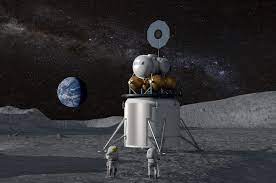
The first moonbound rocket and spacecraft of NASA’s Artemis program are expected to do a “wet dress rehearsal” on the launch pad in February.
- Artemis– Acceleration, Reconnection, Turbulence and Electrodynamics of Moon’s Interaction with the Sun.
- It is NASA’s next mission to the Moon.
- Objective: To measure what happens when the Sun’s radiation hits our rocky moon, where there is no magnetic field to protect it.
- Artemis was the twin sister of Apollo and goddess of the Moon in Greek mythology.
- With the Artemis program, NASA will land the first woman and next man on the Moon by 2024.
- NASA’s powerful new rocket, the Space Launch System (SLS), will send astronauts aboard the Orion spacecraft nearly a quarter million miles from Earth to lunar orbit.
- Astronauts will dock Orion at the Gateway and transfer to a human landing system for expeditions to the surface of the Moon.
- They will return to the orbital outpost to board Orion again before returning safely to Earth.
- Artemis 1, 2:
- The agency will fly two missions around the Moon to test its deep space exploration systems.
- Artemis 1 is aiming to send an uncrewed spacecraft around the moon using a combination of the never-flown Space Launch System rocket, along with the once-flown Orion spacecraft.
- NASA hopes to extend the program with the moon-orbiting crewed Artemis 2 mission in 2024, then a landing on Artemis 3 in 2025, ahead of other crewed missions later in the 2020s.
What Is Space Debris?
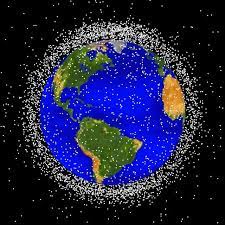
Russia blew up one of its old satellites in November in a missile test that sparked international anger because of the space debris it scattered around the Earth’s orbit.
- Recently, a Chinese satellite (Tsinghua Science Satellite) had a near collision with one of the many chunks of debris left by the fallout of this Russian anti-satellite missile test.
- With more countries venturing into space with every passing decade, the problem is simply ballooning out of control and recent events, like the anti-satellite weapons test by Russia, are only exacerbating the problem.
- The debris is now adding to the space junk problem and posing a major risk to the International Space Station (ISS) and the satellites in geostationary orbit.
- The debris also poses a potential threat to the lives of the US, Russian, and Chinese astronauts and cosmonauts currently in space.
Space Debris:
- Space debris poses a global threat to the continued use of space-based technologies that support critical functions like communication, transport, weather and climate monitoring, remote sensing.
- Predicting collision probability from these space objects is crucial from the national security perspective as well as for the protection of public and private space assets of Indian origin.
- The real amount of space debris is said to be between 500,000 and one million pieces as current sensor technology cannot detect smaller objects.
- They all travel at speeds of up to 17,500 mph (28,162 kmph) fast enough for a relatively small piece of orbital debris to damage a satellite or a spacecraft.
- Outcome of this project will directly support the Indian space sector, valued at $7 billion (Rs 51,334 crore) by providing an operationally flexible, scalable, transparent and indigenous collision probability solution.
High Thrust VIKAS Engine:

The Indian Space Research Organisation (ISRO) recently conducted a successful qualification test of its High Thrust VIKAS Engine at the ISRO Propulsion Complex (IPRC) in Tamil Nadu’s Mahendragiri.
- The Vikas engine will power the ambitious Gaganyaan mission into space.
About the Vikas engine:
- It is a family of liquid fuelled rocket engines.
- It is used in the Polar Satellite Launch Vehicle (PSLV) and the Geosynchronous Satellite Launch Vehicle (GSLV) series of expendable launch vehicles for space launch use.
About Gaganyaan:
- Formal announcement of the Gaganyaan programme was made by Prime Minister Narendra Modi during his Independence Day address on August 15, 2018.
- The initial target was to launch the human spaceflight before the 75th anniversary of India’s independence on August 15, 2022.
- With this launch, India will become the fourth nation in the world to launch a Human Spaceflight Mission after the USA, Russia and China.
- The objective of the Gaganyaan programme is to demonstrate the capability to send humans to low earth orbit on board an Indian launch vehicle and bring them back to earth safely.
- Four Indian astronaut-candidates have already undergone generic space flight training in Russia as part of the Gaganyaan programme.
- ISRO’s heavy-lift launcher GSLV Mk III has been identified for the mission.
Electoral Bonds:

The 19ṭh tranche of electoral bonds, which have been pitched as an alternative to cash donations, were on sale, ahead of the upcoming Assembly elections in five States.
- In the past, the Supreme Court has raised the possibility of misuse of money received by political parties through electoral bonds.
- This may defeat the original idea of the introduction of these bonds to bring transparency in electoral funding and keep a check on the criminalization of politics.
About Electoral Bonds:
- These bonds are issued in multiples of Rs. 1,000, Rs. 10,000, Rs. 1 lakh, Rs. 10 lakh and Rs. 1 crore without any maximum limit.
- State Bank of India is authorised to issue and encash these bonds, which are valid for fifteen days from the date of issuance.
- These bonds are only redeemable in the designated account of a registered political party.
- The bonds are available for purchase by any citizen of India for a period of ten days each in the months of January, April, July and October as may be specified by the Central Government.
- A person being an individual can buy bonds, either singly or jointly with other individuals.
- The donor’s name is not mentioned on the bond.
Deputation Of All India Services Officer:
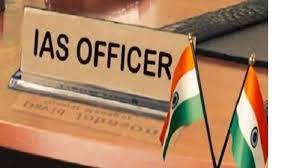
The Centre has proposed amendments to the IAS (Cadre) Rules in order to exercise greater control in central deputation of IAS officials, which has often been at the centre of tussles between the Centre and the states.
- Central deputation in the Indian Administrative Service is covered under Rule-6 (1) of the IAS (Cadre) Rules-1954, inserted in May 1969.
- It states: “A cadre officer may, with the concurrence of the State Governments concerned and the Central Government, be deputed for service under the Central Government or another State Government or under a company, association or body of individuals, whether incorporated or not, which is wholly or substantially owned or controlled by the Central Government or by another State Government.
- Provided that in case of any disagreement, the matter shall be decided by the Central Government and the State Government or State Governments concerned shall give effect to the decision of the Central Government.”
- As on January 1, 2021, out of around 5,200 IAS officers in the country, 458 were on central deputation.
New Circuit House At Somnath:
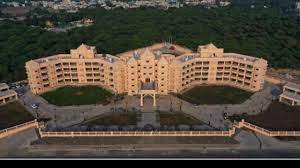
Prime Minister Narendra Modi will inaugurate the new Circuit House at Somnath on 21st January, 2022.
- Somnath Temple is visited by lakhs of devotees from India and abroad every year. The need for the new Circuit House was felt as the existing government facility was located far off from the temple.
- The new Circuit House has been built at a cost of over Rs 30 crore and is located near the Somnath Temple. It is equipped with top class facilities including suites, VIP and deluxe rooms, conference room, auditorium hall etc.
- The Somnath temple, also called Somanātha temple or Deo Patan, is located in Prabhas Patan, Veraval in Gujarat, India.
- One of the most sacred pilgrimage sites for the Hindus, they believe it to be the first among the twelve Jyotirlinga shrines of Shiva.
- It was reconstructed several times in the past after repeated destruction by several Muslim invaders and rulers.
- After India’s independence, those ruins were demolished and the present Somnath temple was reconstructed in the Māru-Gurjara style of Hindu temple architecture.
- The contemporary Somnath temple’s reconstruction was started under the orders of the first Home Minister of India Vallabhbhai Patel and completed in May 1951 after his death.
- Presently the Prime Minister of India Narendra Modi is the chairman of Shree Somnath Mandir trust.
BrahMos Supersonic Cruise Missile:
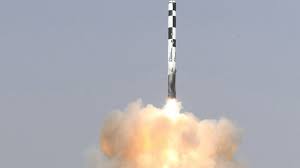
BrahMos supersonic cruise missile, with enhanced capability, successfully test-fired off Odisha coast.
- BrahMos supersonic cruise missile, with increased indigenous content and improved performance, was successfully test-fired from Integrated Test Range, Chandipur off the coast of Odisha on January 20, 2022.
- The launch was conducted by Brahmos Aerospace in close coordination with the teams of Defence Research and Development Organisation (DRDO).
- The missile was equipped with advanced indigenous technologies and followed a modified optimal trajectory for enhanced efficiency and improved performance.
- The missile with the modified control system has been fine-tuned to achieve an enhanced capability.
- BrahMos Aerospace, the joint venture between DRDO and NPOM, Russia, has been continuously upgrading the powerful, highly versatile BrahMos to increase its effectiveness and lethality against sea and land targets. BrahMos is the potent missile weapon system already inducted into the Armed Forces.
Rural Area Development Plan Formulation And Implementation (RADPFI) Guidelines:
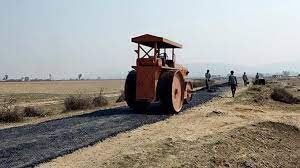
Union Minister Shri Giriraj Singh releases revised Rural Area Development Plan Formulation and Implementation (RADPFI) Guidelines prepared by Ministry of Panchayati Raj.
This new Guideline (2021) is Focused on:
- Typology of villages to prepare the spatial development plan (population, agro-climatic zones, Hill areas, disaster occurrence, urban-peri-urban areas and villages, Near to NH/SH, and Resilience strategies as suggested by BIS). One shoe does not fit all.
- Dealing with different development Land Use standards for different areas, with varied characteristics. To facilitate the planned spatial development of rural areas.
- Village Town Planning Scheme (VPS) – through community based on Collaborative Planning.
- Planning for environmental benefit and disaster preparedness.
- Linking to 15th CFC and respective SFCs.
- Improving the E-Governance through Spatial Data Infrastructure (SDI).
- Integrating/Consolidation of GP Development with RURBAN CLUSTERS/Block/District Plan, as per the 73rd and 74th CAA and GPDP.
- Most importantly using the SVAMITVA (and other digital tools) for Abadi area (linking to land records).
Brent Crude:

Oil prices are at their highest levels since 2014 — Brent crude hit $88.3 per barrel, up 27% since December 1, when it was trading at $69.5.
- The spike has been driven primarily by fears of supply side disruptions.
- The attack by Yemen’s Houthis on fuel trucks in Abu Dhabi, in which three people including two Indians were killed, and the tensions between Russia, the world’s second-largest oil producer, and Ukraine have raised concerns.
- The outage on an Iraq-Turkey pipeline heightened worries.
- There is also concern over the growing imbalance between demand and supply — the former did not see the moderation that was initially expected as the Omicron wave began.
- Further, the key oil producing countries have kept supply on a gradually increasing schedule in spite of the sharp increase in global crude prices.
Brent Crude:
- Brent Crude may refer to any or all of the components of the Brent Complex, a physically and financially traded oil market based around the North Sea of Northwest Europe.
- Colloquially, Brent Crude usually refers to the price of the ICE Brent Crude Oil futures contract or the contract itself.
Justice Clock:
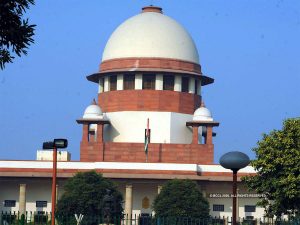
Supreme Court e-Committee chairperson and SC judge Justice DY Chandrachud inaugurated two digital services for Gujarat High court — a ‘Justice Clock’, and electronic payment of court fee.
- An LED display of 7 feet by 10 feet, placed at a height of 17 feet from the ground, has been erected at a busy crossroad near the Gujarat High Court premises.
- This ‘Justice Clock’ will exhibit vital statistics of the justice delivery system in Gujarat, to “maximise outreach and visibility” of the work done by the state judiciary.
- The interface has been designed and developed in-house and will display data from the National Judicial Data Grid (NJDG) in real-time.
- A similar format of Gujarat judiciary-related statistics will also be available on the Gujarat HC website under a tab of ‘Virtual Justice Clock’, accessible to all.
- While the online e-Courts fee system was already available for the Gujarat High Court, which was tested on a pilot basis allowing advocate and parties to procure judicial stamps online through electronic payment and upon submission of a PDF receipt, this platform now stands expanded to all district and taluka courts.
- The payment platform is of StockHolding Corporation of India Ltd (SHCIL) as empanelled by the Gujarat government.
- A PDF receipt of the fee paid will be generated and submitted to the court registry concerned.
- It will then be verified from within the digital case information system and locked as ‘consumed’, wherein the receipt will be defaced, so as to avoid its reuse or misuse.




